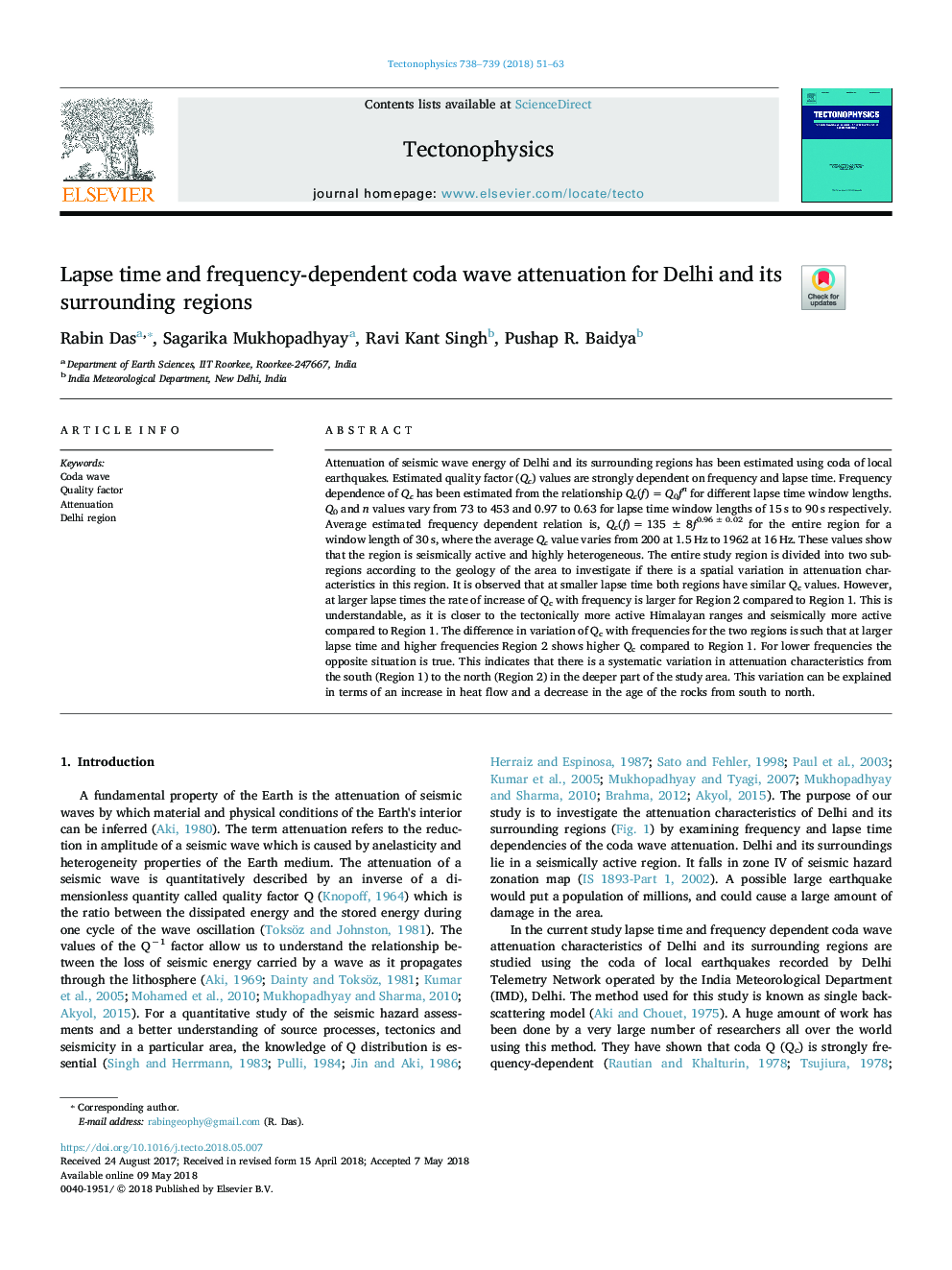| Article ID | Journal | Published Year | Pages | File Type |
|---|---|---|---|---|
| 8908650 | Tectonophysics | 2018 | 13 Pages |
Abstract
Attenuation of seismic wave energy of Delhi and its surrounding regions has been estimated using coda of local earthquakes. Estimated quality factor (Qc) values are strongly dependent on frequency and lapse time. Frequency dependence of Qc has been estimated from the relationship Qc(f)â¯=â¯Q0fn for different lapse time window lengths. Q0 and n values vary from 73 to 453 and 0.97 to 0.63 for lapse time window lengths of 15â¯s to 90â¯s respectively. Average estimated frequency dependent relation is, Qc(f)â¯=â¯135â¯Â±â¯8f0.96±0.02 for the entire region for a window length of 30â¯s, where the average Qc value varies from 200 at 1.5â¯Hz to 1962 at 16â¯Hz. These values show that the region is seismically active and highly heterogeneous. The entire study region is divided into two sub-regions according to the geology of the area to investigate if there is a spatial variation in attenuation characteristics in this region. It is observed that at smaller lapse time both regions have similar Qc values. However, at larger lapse times the rate of increase of Qc with frequency is larger for Region 2 compared to Region 1. This is understandable, as it is closer to the tectonically more active Himalayan ranges and seismically more active compared to Region 1. The difference in variation of Qc with frequencies for the two regions is such that at larger lapse time and higher frequencies Region 2 shows higher Qc compared to Region 1. For lower frequencies the opposite situation is true. This indicates that there is a systematic variation in attenuation characteristics from the south (Region 1) to the north (Region 2) in the deeper part of the study area. This variation can be explained in terms of an increase in heat flow and a decrease in the age of the rocks from south to north.
Keywords
Related Topics
Physical Sciences and Engineering
Earth and Planetary Sciences
Earth-Surface Processes
Authors
Rabin Das, Sagarika Mukhopadhyay, Ravi Kant Singh, Pushap R. Baidya,
